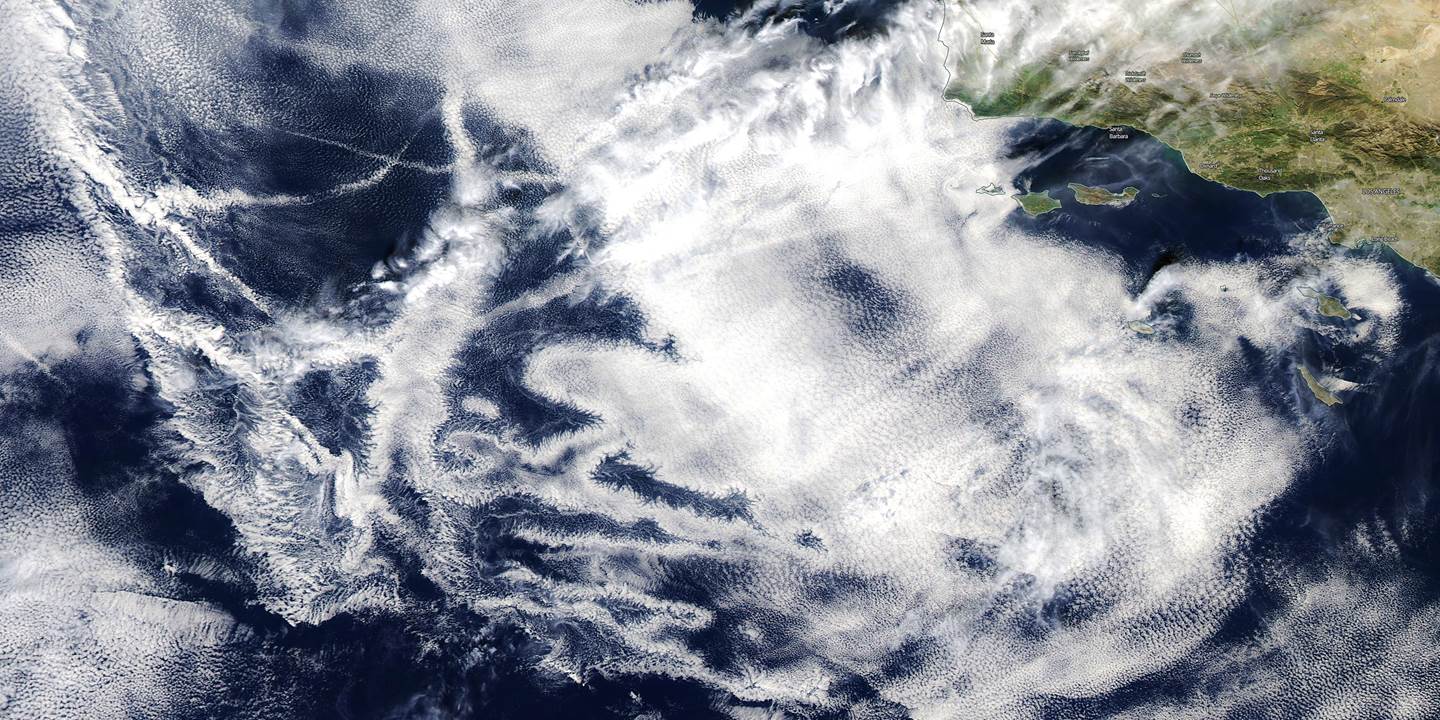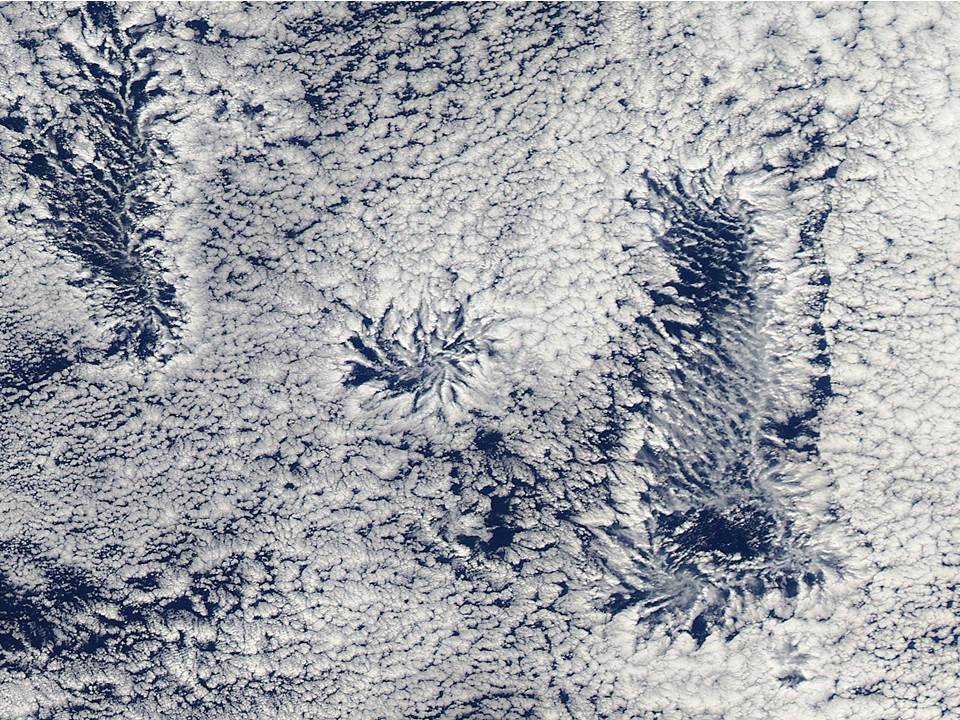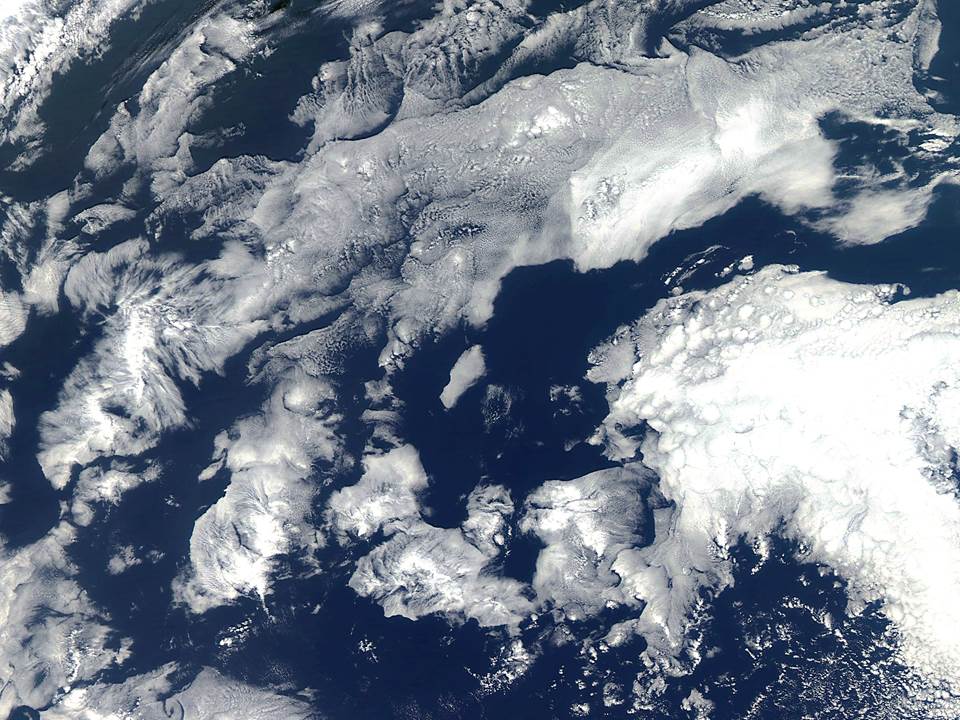Almost every day I check out NASA’s Worldview website to look at global color satellite imagery from the MODIS instruments. I’m usually watching weather systems. If nothing else, the imagery is beautiful.
Yesterday, there were some particularly funky looking marine stratus clouds off the coast of California, generally west and southwest of Los Angeles. There are a couple of ship tracks evident, but I think most of the fractal-esque structure is natural (click image for full-size):
Marine stratus clouds form under a strong temperature inversion at the base of deep sinking air layers associated with high pressure zones, and they take on a wide variety of fascinating forms.
Here’s another example from well off the California coast on Dec. 23, 2014:
And yet another from Dec. 21, 2014:

 Home/Blog
Home/Blog






